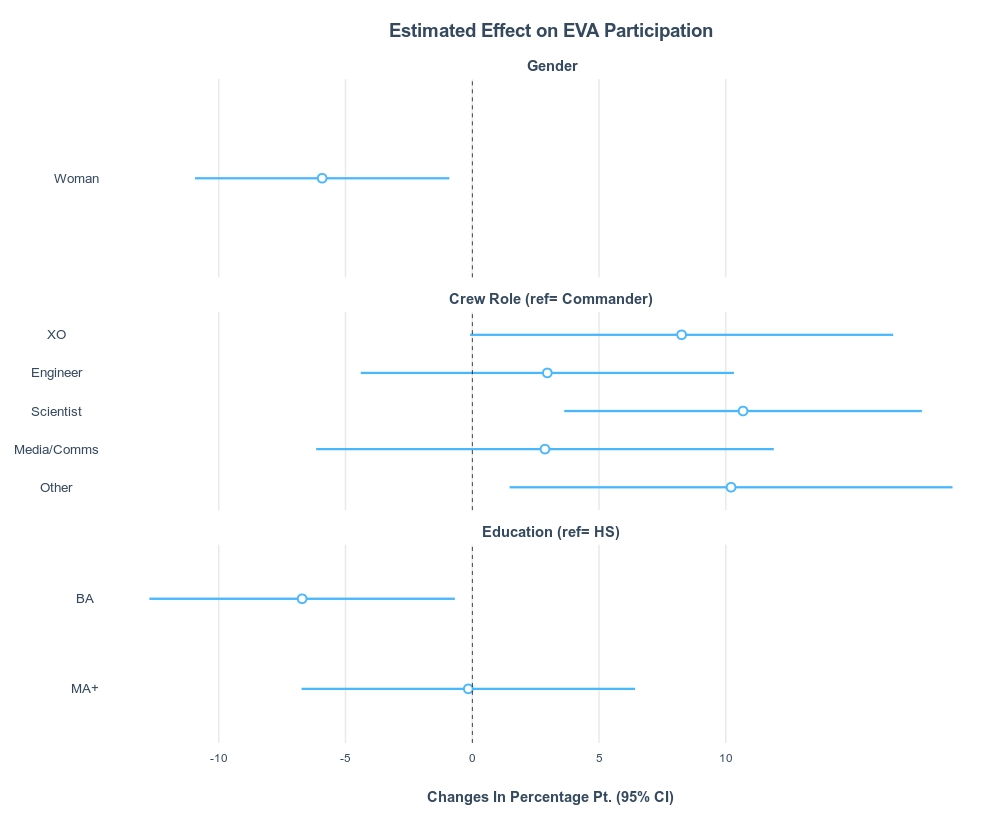EVA Patterns in MDRS Crews
Paper exploring gendered EVA patterns in MDRS crews

Most of research on mixed-gender teams in space analog environments focuses on individual-level variation and overlooks structural causes of inequality. Status characteristics theory posits how socially recognized traits, such as gender, contribute to the formation of informal hierarchies by denoting perceived levels of competence to group members.We investigated gender as a status characteristic in groups in space analog environments. We used data from the Mars Desert Research Station (MDRS) and hypothesized that women crew members are less likely than men to be selected to participate in simulated extravehicular activities (EVAs) during a Mars simulation at the MDRS. We used reports and biographies from 30 randomly selected crews (n=177) posted on the MDRS website to construct our dataset and multilevel generalized regression models to test our hypothesis. Women crew members were 6 percent points less likely to participate in simulated extravehicular activities than men, controlling for crew role, education, and other factors. Results show that gender acts as a status characteristic and influences group decisions in crews in space analogs. These results highlight the need for more studies on interactional inequalities in preparation for a long term human spaceflight.
The paper is accepted for publication in the Journal of Human Performance in Extreme Environments.